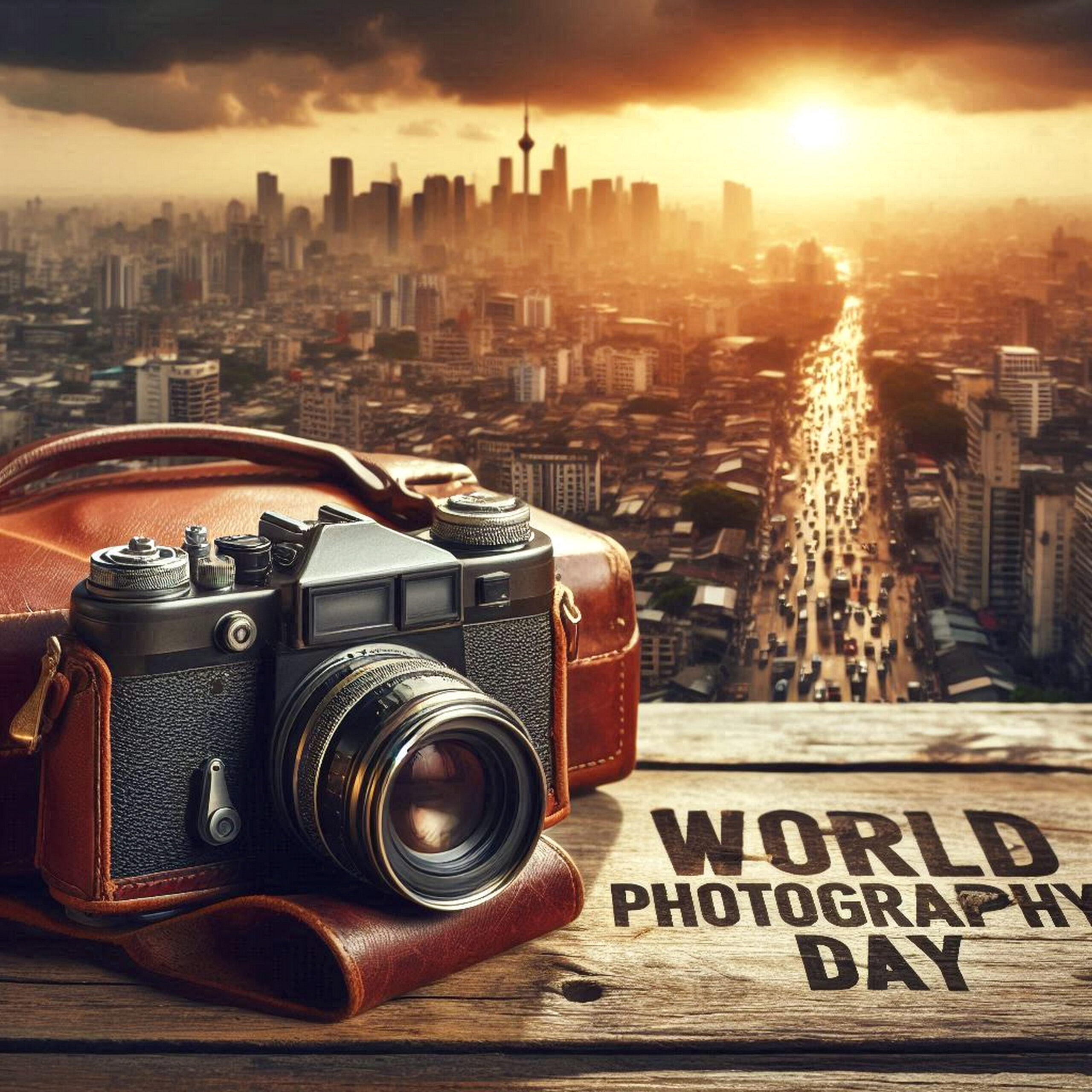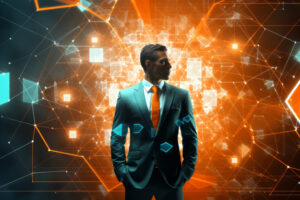The Best AI Tools to Restore Historical Photographs: Bringing the Past to Life
Discover the magic of AI tools to restore historical photographs and breathe new life into cherished memories.
These cutting-edge technologies are revolutionizing the way we preserve and enhance our visual heritage.
From faded sepia tones to cracked and damaged images, AI-powered solutions are here to save the day.
In this comprehensive guide, we’ll explore the fascinating world of AI-driven photo restoration.
We’ll delve into the best tools available, their features, and how they can transform your old photos.
Whether you’re a history buff, genealogy enthusiast, or simply want to revive family heirlooms, this article is for you.
Get ready to embark on a journey through time as we uncover the power of AI in bringing the past back to life.
Let’s dive into the world of AI tools to restore historical photographs and unlock the stories hidden within them.
We strongly recommend that you check out our guide on how to take advantage of AI in today’s passive income economy.
Table of Contents
The Evolution of Photo Restoration: From Darkrooms to AI
Photo restoration has come a long way since the days of manual retouching in darkrooms.
Traditional methods involved painstaking work with brushes, chemicals, and specialized equipment.
Skilled technicians would spend hours carefully repairing damage and enhancing details by hand.
While effective, these techniques were time-consuming, expensive, and often limited in their results.
The digital age brought new possibilities with software like Photoshop, allowing for more precise edits.
However, these tools still required considerable expertise and time to achieve professional results.
Enter artificial intelligence, the game-changer in the world of photo restoration.
AI tools to restore historical photographs have revolutionized the process, making it faster and more accessible.
These advanced algorithms can analyze images, identify damage, and make intelligent corrections.
They can colorize black and white photos, sharpen blurry details, and even reconstruct missing parts.
The best part? Many of these AI tools are user-friendly, allowing anyone to restore their photos with ease.
As we explore the top AI tools to restore historical photographs, you’ll see just how far we’ve come.
From simple snapshots to priceless historical artifacts, AI is helping us preserve our visual legacy.
Let’s take a closer look at some of the best options available for bringing your old photos back to life.
Top AI Tools to Restore Historical Photographs
1. DeOldify: Breathing Color into Black and White Images
DeOldify stands out as one of the most popular AI tools to restore historical photographs.
This open-source project specializes in colorizing black and white images with remarkable accuracy.
Using advanced deep learning techniques, DeOldify can add natural-looking color to old photos.
The tool analyzes the content of the image to make intelligent color choices based on context.
It can differentiate between skin tones, fabrics, landscapes, and more for realistic results.
While primarily focused on colorization, DeOldify also includes some basic restoration features.
It can help sharpen details and reduce noise in older photographs, enhancing overall quality.
For those comfortable with technical setups, DeOldify offers a powerful and customizable solution.
2. MyHeritage Photo Enhancer: Bringing Ancestors into Focus
MyHeritage, known for genealogy services, offers an impressive AI tool to restore historical photographs.
Their Photo Enhancer uses deep learning algorithms to sharpen and enhance old family photos.
This tool is particularly effective at improving the clarity of facial features in group photos.
It can transform blurry, low-resolution images into crisp, detailed portraits of your ancestors.
The AI analyzes the image and intelligently fills in missing details based on facial recognition.
MyHeritage also offers a colorization feature, allowing you to see your family history in full color.
With its user-friendly interface, this tool is accessible even to those with limited technical skills.
It’s an excellent choice for genealogists and family historians looking to breathe life into old photos.
3. Hotpot.ai: All-in-One AI Photo Restoration
Hotpot.ai offers a comprehensive suite of AI tools to restore historical photographs.
This versatile platform combines multiple restoration techniques in one easy-to-use interface.
Users can colorize black and white photos, enhance image quality, and remove scratches or damage.
The AI algorithms are trained on vast datasets, allowing for accurate and natural-looking results.
One standout feature is the ability to upscale low-resolution images without losing quality.
Hotpot.ai also offers creative tools like background removal and style transfer for artistic projects.
With both free and premium options, it caters to casual users and professionals alike.
Its all-in-one approach makes it a great choice for those wanting to explore various restoration techniques.
4. NVIDIA’s GAN-based Inpainting: Reconstructing Missing Details
NVIDIA, a leader in AI and graphics technology, has developed powerful tools for photo restoration.
Their GAN (Generative Adversarial Network) based inpainting tool is particularly impressive.
This advanced AI can reconstruct missing or damaged parts of an image with remarkable accuracy.
It analyzes the surrounding context to generate new pixels that seamlessly blend with the original.
While more complex to use, this tool offers unparalleled results for severely damaged photographs.
It’s especially useful for historical artifacts where large portions of the image may be missing.
Researchers and institutions use this technology to restore priceless historical documents and photos.
For those with technical expertise, NVIDIA’s tools represent the cutting edge of AI photo restoration.
5. Remini: Mobile-Friendly AI Photo Enhancement
Remini brings the power of AI tools to restore historical photographs to your smartphone.
This user-friendly app uses advanced AI algorithms to enhance and restore photos on the go.
It’s particularly effective at improving the quality of old, blurry, or low-resolution images.
Remini can sharpen facial features, reduce noise, and even add realistic details to photos.
The app also offers colorization options, allowing you to see vintage photos in a new light.
With its intuitive interface, Remini makes photo restoration accessible to everyone.
It’s an excellent choice for quickly touching up old family photos or historical snapshots.
While not as powerful as some desktop solutions, Remini offers impressive results for a mobile app.
The Science Behind AI Tools to Restore Historical Photographs
To truly appreciate these AI tools to restore historical photographs, let’s explore the technology behind them.
At the core of these tools are advanced machine learning algorithms, particularly deep learning networks.
These AI models are trained on vast datasets of historical photos and their restored counterparts.
Through this training, the AI learns to recognize patterns of damage, color, and image structure.
When presented with a new photo, the AI can apply this learned knowledge to make intelligent corrections.
For colorization, the AI analyzes the grayscale values and context to predict appropriate colors.
In restoration, it identifies areas of damage and uses surrounding information to reconstruct details.
The most advanced tools use GANs, where two neural networks work together to produce realistic results.
One network generates the restored image, while the other critiques it for authenticity.
This process continues until the restored image is indistinguishable from a genuine photograph.
The result is a level of restoration that was previously impossible with traditional methods.
As AI technology continues to advance, we can expect even more impressive results in the future.
These tools are not just improving image quality; they’re helping us preserve our cultural heritage.
By bringing clarity and color to historical photographs, AI is allowing us to connect with the past.
Ethical Considerations in AI Photo Restoration
As we embrace AI tools to restore historical photographs, it’s important to consider ethical implications.
While these tools offer incredible benefits, they also raise questions about authenticity and manipulation.
One concern is the potential for altering historical accuracy through colorization or detail enhancement.
There’s a fine line between restoration and reimagination that historians and archivists must navigate.
Another issue is the potential for misuse, such as altering historical photos for misleading purposes.
It’s crucial to maintain transparency about which elements of a photo have been AI-enhanced or restored.
Privacy concerns also arise when restoring and potentially identifying individuals in historical photos.
Responsible use of AI restoration tools requires balancing technological capabilities with ethical considerations.
Many experts advocate for preserving original copies alongside restored versions for reference.
It’s also important to educate users about the limitations and potential biases of AI restoration.
While AI can produce remarkable results, it’s not infallible and may introduce inaccuracies.
As these tools become more widespread, developing ethical guidelines for their use becomes crucial.
By addressing these concerns, we can ensure that AI photo restoration enhances rather than distorts history.
Ultimately, the goal is to use these tools responsibly to preserve and illuminate our shared past.
DIY Tips for Using AI Tools to Restore Historical Photographs
Ready to try your hand at using AI tools to restore historical photographs? Here are some helpful tips:
- Start with a high-quality scan of your original photo for the best results.
- Experiment with different tools to find the one that works best for your specific photo.
- Use a light touch – sometimes subtle enhancements are more effective than dramatic changes.
- Pay attention to details like skin tones and clothing colors when using colorization tools.
- Compare your restored image with the original to ensure you’re not losing important details.
- Consider the historical context of the photo when making restoration decisions.
- Save your work in progress at different stages to track changes and revert if needed.
- Don’t be afraid to combine AI tools with manual touch-ups for the best results.
- Respect copyright and privacy laws when working with historical photos that aren’t your own.
- Share your restored photos with family members to preserve and celebrate your shared history.
Remember, the goal is to enhance and preserve, not to completely reinvent the original photograph.
With practice and patience, you can achieve remarkable results using AI tools to restore historical photographs.
The Future of AI in Historical Photo Restoration
As we look to the future, the potential for AI tools to restore historical photographs is truly exciting.
Advancements in machine learning and computer vision promise even more accurate and detailed restorations.
We may soon see AI that can reconstruct entire scenes from fragmentary photographic evidence.
The integration of historical databases could allow AI to accurately colorize based on period information.
3D modeling techniques might enable the creation of immersive experiences from flat historical photos.
AI could potentially identify and tag individuals in historical photos, aiding genealogical research.
As natural language processing improves, AI might generate detailed descriptions of historical scenes.
The combination of AI restoration with virtual and augmented reality could bring history to life in new ways.
However, as these technologies advance, so too must our approach to using them responsibly.
The preservation of historical accuracy will remain a crucial consideration in future developments.
We may see the emergence of specialized AI tools for different historical periods or photographic techniques.
Collaboration between AI developers, historians, and archivists will be key to realizing this potential.
As AI becomes more accessible, we could see a democratization of historical photo restoration.
This could lead to the discovery and preservation of countless previously overlooked historical images.
The future of AI in photo restoration is not just about technology, but about how we connect with our past.
Conclusion:
AI tools to restore historical photographs have opened up a world of possibilities for preserving our visual heritage.
From bringing color to black and white images to reconstructing damaged photos, the capabilities are remarkable.
These tools allow us to see history in a new light, bringing clarity and vividness to faded memories.
As we’ve explored, there are numerous options available, each with its own strengths and specialties.
Whether you’re a professional archivist or simply want to restore old family photos, there’s a tool for you.
The science behind these AI tools is complex, but the results speak for themselves.
As we look to the future, the potential for AI in historical photo restoration is truly exciting.
However, it’s crucial to approach this technology with an understanding of its ethical implications.
By using AI tools responsibly, we can enhance our connection to the past without distorting it.
The ability to restore historical photographs is more than just a technological achievement.
It’s a way of honoring our ancestors, understanding our history, and preserving our cultural legacy.
As these AI tools continue to evolve, they promise to unlock even more hidden stories from the past.
So why not give it a try? Dust off those old photo albums and bring your family history to life.
With AI tools to restore historical photographs, the past has never looked so clear – or so colorful.
Frequently Asked Questions
What is the best AI tool to restore old photos?
The best AI tool to restore old photos depends on your specific needs and technical expertise. However, some popular and effective options include:
- DeOldify for colorizing black and white photos
- MyHeritage Photo Enhancer for sharpening and enhancing family photos
- Hotpot.ai for all-in-one restoration capabilities
- Remini for mobile-friendly photo enhancement
Each tool has its strengths, so you might want to experiment with a few to find the one that works best for your particular photos.
Can AI restore old photos?
Yes, AI can restore old photos with remarkable effectiveness. AI-powered tools can:
- Colorize black and white images
- Sharpen blurry or low-resolution photos
- Remove scratches, cracks, and other damage
- Enhance overall image quality
- Reconstruct missing parts of an image
The results can be quite impressive, often bringing new life to old, damaged, or faded photographs.
Can ChatGPT restore old photos?
No, ChatGPT itself cannot restore old photos. ChatGPT is a language model designed for text-based interactions and doesn’t have the capability to process or manipulate images.
However, ChatGPT can provide information about photo restoration techniques and recommend AI tools that can restore old photos. For actual photo restoration, you’ll need to use specialized AI image processing tools like those mentioned earlier.
How to restore old photographs?
To restore old photographs using AI tools, follow these general steps:
- Scan your old photo at a high resolution (at least 300 DPI)
- Choose an AI photo restoration tool that suits your needs
- Upload your scanned photo to the chosen AI tool
- Select the restoration options you want (e.g., colorization, enhancement, damage repair)
- Let the AI process your photo
- Review the results and make any manual adjustments if necessary
- Save your restored photo
Remember to always keep the original scan of your photo. It’s also a good idea to save versions at different stages of the restoration process.
For best results, you might want to combine AI restoration with some manual touch-ups using photo editing software. This allows you to fine-tune the AI’s work and ensure the restored photo meets your expectations.

We strongly recommend that you check out our guide on how to take advantage of AI in today’s passive income economy.




